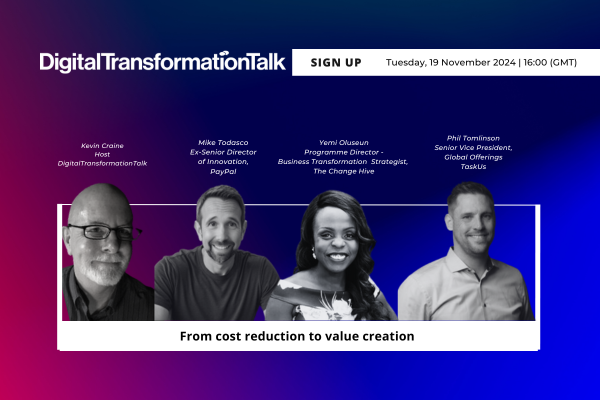AI: avoiding a tick-box mentality

It’s essential to ignore the hype around generative AI. Nicolas Avila at Globant explains how to turn smart tech into a shrewd business move
At least 30% of generative AI (GenAI) projects look set to be abandoned after proof of concept by the end of 2025 due to poor data quality, inadequate risk controls, escalating costs or unclear business value.
That’s according to a senior analyst at Gartner who warned that while many enterprises are investing in genAI, many are finding it difficult to marry the outcomes with investment.
“After last year’s hype, executives are impatient to see returns on GenAI investments, yet organisations are struggling to prove and realise value,” said Rita Sallam, Distinguished VP Analyst speaking at the Gartner Data & Analytics Summit in Sydney earlier this summer.
“As the scope of initiatives widens, the financial burden of developing and deploying GenAI models is increasingly felt,” said Sallam.
At first glance, the scale of projects that could potentially face the axe is somewhat alarming. But at the same time, it is not surprising. After all, while GenAI has been touted as a tool to improve productivity, figuring out exactly how that delivers better outcomes and quantifiable ROI is not so easy.
Strengths and weaknesses of GenAI
Although it’s been two years since ChatGPT burst onto the scene, it’s only now that people are really beginning to understand what GenAI can — and can’t — do. This period of discovery has been a vital part of the technology learning curve. Why? Because you cannot develop realistic and useful objectives unless you know what you’re dealing with.
After all, up until recently the headlines surrounding the impact of GenAI focused on swathes of job losses among white collar workers. Today, the narrative has shifted to one that views such solutions as a must-have tool to boost productivity.
That last point is borne out by a recent Harvard Business School study which found that AI can improve a worker’s performance by as much as 40% compared with workers who don’t use it. By investing in AI that empowers employees and supercharges their productivity, not only do they get more work done, it allows them to focus on other tasks.
Marrying GenAI with business goals
For instance, GenAI-powered chatbots can be used to take up the slack in call centres freeing up front-line staff to deal with tricky, more complex customer enquiries.
In HR, AI can be used to sift through candidate applications and automate many of the tasks concerning recruitment, onboarding and ongoing career development — something which has even greater significance with large-scale enterprises.
While in content creation, AI can do everything from penning a short email to devising a full-blown marketing campaign. The most democratised of all the GenAI use cases, it’s not surprising that it’s one the areas to have received the most scrutiny. And quite right too, because the only way to really discover whether GenAI is worth the investment of both and money is to put it to the test.
Which means giving teams time to ‘play’ with the technology to explore its strengths and weaknesses — in whatever iteration and scenario — to see whether it really does make the grade. Only then, are you in a position to pilot new solutions before scaling up across your enterprise.
Taking things one step at a time
For those who reach this stage, the advice is simple. Start small. Think big. But ensure that every step is tested and evaluated before the findings are used to help shape the next phase.
Part of the reason behind this is to ensure that all stakeholders — those cross-functional teams from areas such as IT, operations and relevant business units — are involved every step of the way.
By taking this path, enterprises are in a much better position to undertake a critical evaluation of what GenAI can — and can’t — do. The evidence so far is that while it has its strengths, it is not a one-size-fits-all solution.
At some point, part of the assessment has to focus on the quality of data available on which solutions are based. One recurring theme, for example, is the critical need for high-quality data, but also the robust infrastructure and processes needed for a successful GenAI deployment.
While these things may be a tangible part of any project, there are other areas that also need consideration, such as ethical implications, potential biases, and compliance issues when evaluating GenAI use.
It’s also imperative that enterprises avoid falling into the “checklist mentality” when adopting GenAI. Simply adopting GenAI because it’s new — or out of some concern that you might be left behind — is no way to run a business. Instead, it needs careful consideration grounded in clear-cut strategic thinking.
And once all these things have been fed into the mix, the most important factor for success is to see any project right through to the end. That means having the grit to move through pilots and into completion regardless of the difficulties encountered along the way. For it is only by driving projects to fruition that teams will push the flywheel of innovation to speed up and capture positive outcomes.
That means blocking out the hype, embracing the complexities of this emerging technology, making a commitment to push boundaries, and seeing GenAI for what it really is — a powerful tool with the potential to transform businesses.
Nicolas Avila is Chief Technology Officer of North America at Globant
Main image courtesy of iStockPhoto.com and Valerii Apetroaiei

Business Reporter Team
Most Viewed
Winston House, 3rd Floor, Units 306-309, 2-4 Dollis Park, London, N3 1HF
23-29 Hendon Lane, London, N3 1RT
020 8349 4363
© 2024, Lyonsdown Limited. Business Reporter® is a registered trademark of Lyonsdown Ltd. VAT registration number: 830519543





